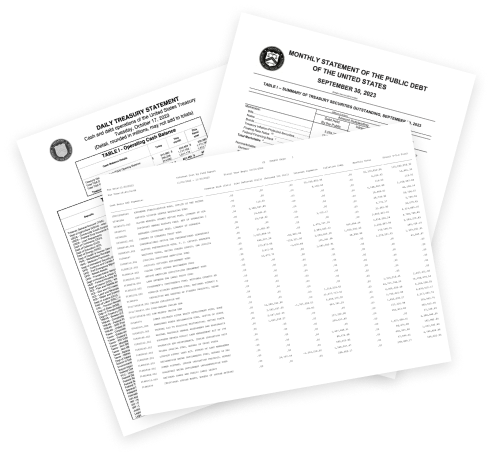
In fiscal year 1, the federal government has collected $ in revenue.
The federal government collects revenue from a variety of sources, including individual income taxes, payroll taxes, corporate income taxes, and excise taxes. It also collects revenue from services like admission to national parks and customs duties.
In -12, the federal government collected $. The primary source of revenue for the U.S. government in -1 was .
In fiscal year , the federal government has spent $.
The federal government funds a variety of programs and services that support the American public. The government also spends money on interest it has incurred on outstanding federal debt, including Treasury notes and bonds.
In -1 the federal government spent $, with the majority spent on .
The amount by which spending exceeds revenue, $ in , is referred to as deficit spending.
A budget deficit occurs when the money spent exceeds the money collected for a given period.
In -1, the federal government spent $ more than it collected, resulting in a deficit. Compared to -2, the national deficit by $ in -1.
The deficit this year has contributed to a national debt of $ through month year.
The national debt is the money the federal government has borrowed to cover the outstanding balance of expenses incurred over time. To pay for a deficit, the federal government borrows additional funds, which increases the debt. Other activities contribute to the change in federal debt, such as changes in the Treasury’s operating cash account and federal student loans. The total debt for the U.S. through month DD, year is $.
At the end of -1 the government had $ in federal debt. In -1, the national debt by $ compared to -2.

A regular Statement and Account of the Receipts and Expenditures of all public Money shall be published from time to time.
U.S. Constitution, Article 1, Section 9
Your Guide to America's Finances is brought to you by the U.S. Department of the Treasury

